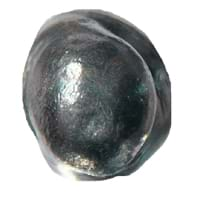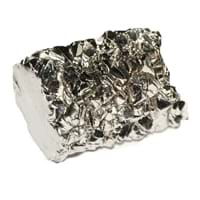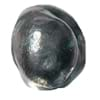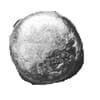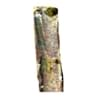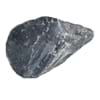Beryllium vs Titanium
Periodic Table
Symbol
Be
Ti
Group Number
2
16
4
14
Period Number
2
4
Block
s block
d block
Element Family
Alkaline Earth
Transition Metal
CAS Number
7440417
99+
7440326
99+
Space Group Name
P63/mmc
P63/mmc
Space Group Number
194.00
5
194.00
5
Facts
Interesting Facts
- Beryllium is best anti corrosion metal.
- Beryllium is the lightest metal and still it is stronger than steel.
- It also finds various applications in Nuclear reactors as a reflector.
- The only metal which burns in Nitrogen is Titanium.
- Titanium is also known as corrosion resistant metal.
Sources
Earth's crust, Found in Minerals, Mining, Ores of metals, Ores of Minerals
Found in Minerals, Mining
History
Who Discovered
Louis Nicolas Vauquelin
W. Gregor & J. Berzelius
Discovery
In 1797
In 1791
Abundance
Abundance In Universe
1 * 10-7 %
23
3 * 10-4 %
9
Abundance In Sun
~0.00000001 %
29
~0.0004 %
9
Abundance In Meteorites
0.00 %
99+
0.05 %
11
Abundance In Earth's Crust
0.00 %
35
0.66 %
7
Abundance In Oceans
0.00 %
39
0.00 %
15
Abundance In Humans
0.00 %
19
Not Available
Uses
Uses & Benefits
- Its alloys with copper or nickel are used in manufacturing Gyroscopes, springs, electrical contact and non sparking tools.
- Beryllium Alloys are used as a material for aircraft, missiles, spacecraft and satellite.
- Its alloys are used in spacecraft, aircraft and ammunition industry.
- Its pipes are used in distillation plants, submarines, hulls of big ships, etc.
Industrial Uses
Aerospace Industry, Ammunition Industry, Automobile Industry, Electrical Industry, Electronic Industry
Aerospace Industry, Automobile Industry, Chemical Industry, Electrical Industry, Electronic Industry
Medical Uses
NA
Dentistry, Surgical Instruments Manufacturing
Other Uses
Alloys
Alloys, Jewellery, Sculptures, Statues
Biological Properties
Toxicity
Toxic
Non Toxic
Present in Human Body
Yes
Yes
In Blood
0.00 Blood/mg dm-3
32
0.05 Blood/mg dm-3
16
In Bone
0.00 p.p.m.
32
Not Available
Physical Properties
Melting Point
1,278.00 °C
36
1,660.00 °C
18
Boiling Point
2,970.00 °C
32
3,287.00 °C
22
Appearance
Physical State
Solid
Solid
Color
White Gray
Silvery Gray-White
Luster
Metallic
Metallic
Hardness
Mohs Hardness
5.50
7
6.00
6
Brinell Hardness
590.00 MPa
21
716.00 MPa
15
Vickers Hardness
1,670.00 MPa
4
830.00 MPa
14
Speed of Sound
12,890.00 m/s
2
5,090.00 m/s
9
Optical Properties
Allotropes
No
No
α Allotropes
Not Available
Not Available
β Allotropes
Not Available
Not Available
γ Allotropes
Not Available
Not Available
Chemical Properties
Chemical Formula
Be
Ti
Isotopes
Known Isotopes
9
29
23
16
Electronegativity
Pauling Electronegativity
1.57
24
1.54
26
Sanderson Electronegativity
1.81
12
1.09
20
Allred Rochow Electronegativity
1.47
14
1.32
23
Mulliken-Jaffe Electronegativity
1.54
12
Not Available
Allen Electronegativity
1.58
23
1.38
32
Electropositivity
Pauling Electropositivity
2.43
30
2.46
28
Ionization Energies
1st Energy Level
899.50 kJ/mol
7
658.80 kJ/mol
39
2nd Energy Level
1,757.10 kJ/mol
23
1,309.80 kJ/mol
99+
3rd Energy Level
14,848.70 kJ/mol
2
2,652.50 kJ/mol
99+
4th Energy Level
21,006.60 kJ/mol
2
4,174.60 kJ/mol
32
5th Energy Level
Not Available
9,581.00 kJ/mol
5
6th Energy Level
Not Available
11,533.00 kJ/mol
6
7th Energy level
Not Available
13,590.00 kJ/mol
6
8th Energy Level
Not Available
16,440.00 kJ/mol
8
9th Energy Level
Not Available
18,530.00 kJ/mol
11
10th Energy Level
Not Available
20,833.00 kJ/mol
15
11th Energy Level
Not Available
25,575.00 kJ/mol
14
12th Energy Level
Not Available
28,125.00 kJ/mol
14
13th Energy Level
Not Available
76,015.00 kJ/mol
1
14th Energy Level
Not Available
83,280.00 kJ/mol
2
15th Energy Level
Not Available
90,880.00 kJ/mol
3
16th Energy Level
Not Available
100,700.00 kJ/mol
4
17th Energy Level
Not Available
109,100.00 kJ/mol
5
18th Energy Level
Not Available
117,800.00 kJ/mol
6
19th Energy Level
Not Available
129,900.00 kJ/mol
7
20th Energy Level
Not Available
137,530.00 kJ/mol
9
Electrochemical Equivalent
0.17 g/amp-hr
99+
0.45 g/amp-hr
99+
Electron Work Function
4.98 eV
6
4.33 eV
17
Other Chemical Properties
Corrosion, Ionization, Radioactive Isotopes
Chemical Stability, Ionization
Atomic Properties
Atomic Number
4
99+
22
99+
Electron Configuration
[He] 2s2
[Ar] 3d2 4s2
Crystal Structure
Hexagonal Close Packed (HCP)
Hexagonal Close Packed (HCP)
Crystal Lattice
HCP-Crystal-Structure-of-Beryllium.jpg#100
HCP-Crystal-Structure-of-Titanium.jpg#100
Atom
Number of Protons
4
99+
22
99+
Number of Neutrons
5
99+
26
99+
Number of Electrons
4
99+
22
99+
Radius of an Atom
Atomic Radius
112.00 pm
99+
147.00 pm
34
Covalent Radius
96.00 pm
99+
160.00 pm
30
Van der Waals Radius
153.00 pm
99+
200.00 pm
28
Atomic Weight
9.01 amu
99+
47.87 amu
99+
Atomic Volume
5.00 cm3/mol
99+
10.64 cm3/mol
99+
Adjacent Atomic Numbers
Valence Electron Potential
82.00 (-eV)
15
95.20 (-eV)
10
Lattice Constant
228.58 pm
99+
295.08 pm
99+
Lattice Angles
π/2, π/2, π/2
π/2, π/2, 2 π/3
Lattice C/A Ratio
1.57
18
Not Available
Mechanical Properties
Density
Density At Room Temperature
1.85 g/cm3
99+
4.51 g/cm3
99+
Density When Liquid (at m.p.)
1.69 g/cm3
99+
4.11 g/cm3
99+
Tensile Strength
Not Available
434.00 MPa
9
Viscosity
Not Available
Not Available
Vapor Pressure
Vapor Pressure at 1000 K
0.00 (Pa)
19
Not Available
Vapor Pressure at 2000 K
Not Available
0.98 (Pa)
14
Elasticity properties
Shear Modulus
132.00 GPa
7
44.00 GPa
17
Bulk Modulus
130.00 GPa
13
110.00 GPa
15
Young's Modulus
287.00 GPa
7
116.00 GPa
18
Poisson Ratio
0.03
35
0.32
12
Other Mechanical Properties
NA
Ductile
Magnetic Properties
Magnetic Characteristics
Specific Gravity
1.85
99+
4.51
99+
Magnetic Ordering
Diamagnetic
Paramagnetic
Electrical Properties
Electrical Property
Semiconductor
Poor Conductor
Resistivity
36.00 nΩ·m
99+
420.00 nΩ·m
12
Electrical Conductivity
0.31 106/cm Ω
5
0.02 106/cm Ω
99+
Electron Affinity
0.00 kJ/mol
40
7.60 kJ/mol
37
Thermal Properties
Specific Heat
1.82 J/(kg K)
2
0.52 J/(kg K)
9
Molar Heat Capacity
16.44 J/mol·K
99+
25.06 J/mol·K
99+
Thermal Conductivity
200.00 W/m·K
6
21.90 W/m·K
99+
Critical Temperature
Not Available
Not Available
Thermal Expansion
11.30 µm/(m·K)
34
8.60 µm/(m·K)
99+
Enthalpy
Enthalpy of Vaporization
294.70 kJ/mol
30
429.00 kJ/mol
15
Enthalpy of Fusion
11.72 kJ/mol
30
15.48 kJ/mol
19
Enthalpy of Atomization
326.40 kJ/mol
30
468.60 kJ/mol
15
Standard Molar Entropy
9.50 J/mol.K
99+
27.30 J/mol.K
99+
